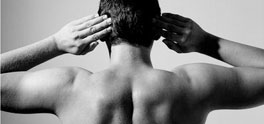Dreams and Sleep
Some dreams are great aren’t they? Adventures, memories and fantasies! But others are not so much fun as any young child with a nightmare will attest. So why do we dream? Is it natures way of giving us a little escape? Well not entirely. There are a few biological reasons why we dream. But the truth is that we don’t yet fully understand why we dream.
We sleep to give our bodies an opportunity to rest & rebuild. The same applies to our brains. After a long day’s work our brains need to rest. But it is not as simple for the brain. First it needs to sort through all the new information and stimuli from the day and work out what’s worth keeping and what’s good for the trash. It also needs to organise and store all the keeper information in a logical and tidy way so we can find it (remember it) when we are looking for it. You’ll often find that the days activities are played back to you at night in your dreams - usually a bit twisted and confused - but definitely influenced by what we saw and what we thought during the day. If the occasion we very significant to us then it may be played back to us for weeks and even years to come.
It is way too complicated for us to go into the details of all the various stages of sleep and dreaming and how they work together to form memories, but suffice to say that when we dream we are playing back information to our brain, helping us to remember and store it.
If you are sleep deprived you may find that when you do manage to sleep your dream are really strong and intense. They call it REM Rebound, with REM referring to the Rapid Eye Movement phase of sleep and the Rebound in reference to your body playing catch-up and really sleeping (and dreaming) hard. REM is the main dreaming sleep phase. You can dream in the other phase (know as SWS or Slow Wave Sleep) but invariably our dreams are more vivid and active in the REM phase.
During a night’s sleep we go through cycles of REM and SWS phases (up to 5) with the REM phases growing in length during the night. Our last REM phase can be up to 40 minutes giving us a long dream period just before waking up. Drinking alcohol and smoking (the nicotine) both repress REM sleep as can some drugs for blood pressure and depression.
It is hard to determine if males and females dream differently, but there are some studies that have looked into it. Most of the results are general in nature but there are a few interesting findings:
- Females report seeing colours, sometimes bright colours. Male don’t often report colours in their dreams and if they do they tend to be muted.
- Females can more often identify their sexual partners in dreams. Males can not
- Children don’t usually include themselves in their dreams until the age of 7 or 8.
There is also a small percentage of the population that can be described as Lucid Dreamers. Lucid Dreamers are in some way in control of their dreams (or part of their dreams). When studied it shows that the frontal cortex of Lucid Dreamers brains (the conscious part) is active in a similar way to being awake. There is conjecture as to whether these dreamers are actually asleep or more in a state of being in-between wake and sleep.





